Bolted flour in sourdough bread completely transformed the way I bake. I first discovered it at a local farmer’s market where a small stone mill sold a variety of flours. The miller explained that bolted flour is partially sifted, falling between whole wheat and white flour. It keeps much of the flavor and nutrition of the grain while being easier to work with. Curious, I took some home to try in my favorite sourdough recipe.
That bake changed everything. The dough felt soft yet structured, more manageable than whole wheat but not as delicate as plain white flour. When the loaf came out of the oven, the crust had a deep golden glow and the crumb was airy yet hearty. The flavor stood out most of all. It was nutty, complex, and perfectly balanced in a way I had never experienced before. That moment made me realize why bakers everywhere are raving about bolted flour in sourdough bread.
In this guide, we will explore everything you need to know about using bolted flour in sourdough bread. From its nutritional benefits to how it impacts fermentation, and even how to incorporate it into your own recipes, you will leave with the knowledge to bake sourdough that is flavorful, nutritious, and satisfying.
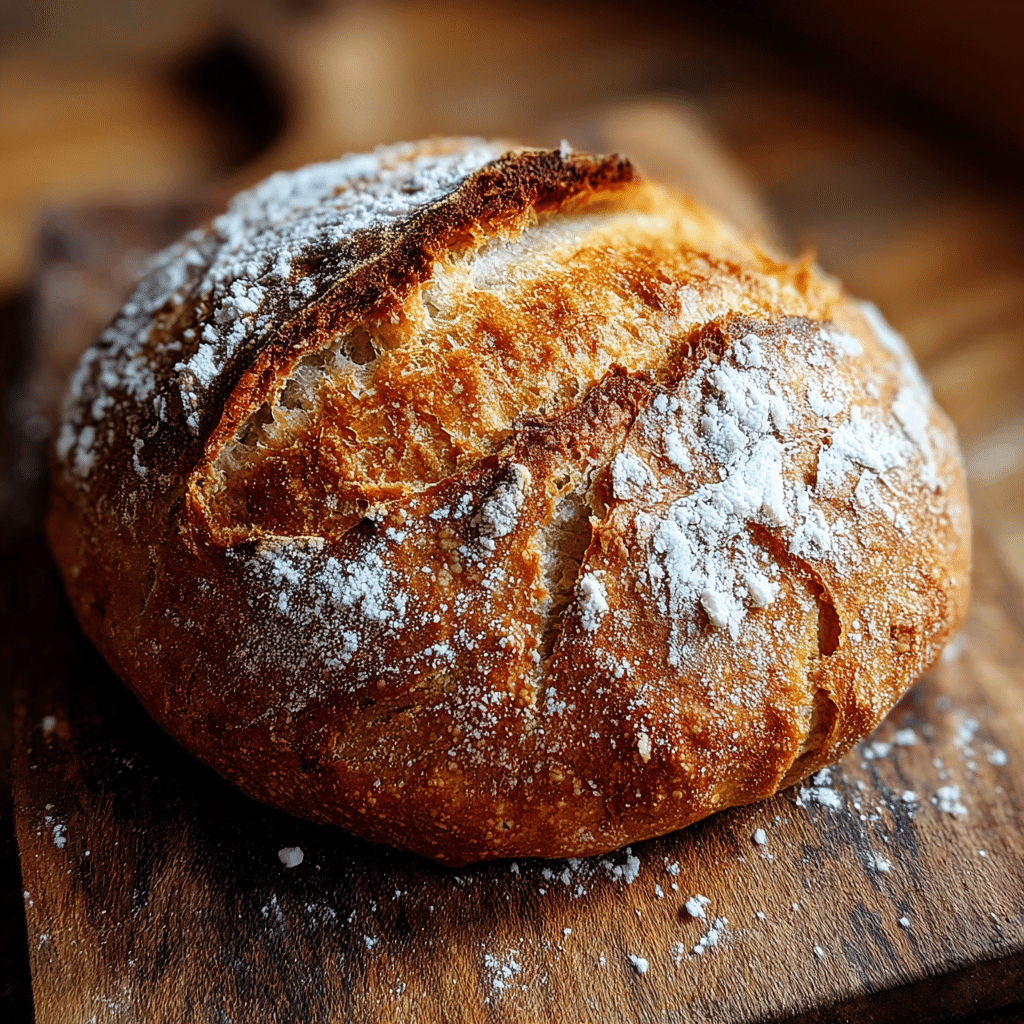
(Looking for more baking inspiration? Check out our sourdough bread tips here.)
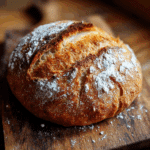
Bolted Flour In Sourdough Bread: Everything You Need To Know
- Total Time: 13–17 hours
- Yield: 1 large loaf 1x
- Diet: Vegetarian
Description
A hearty, flavorful artisan loaf made with bolted flour for the perfect balance of nutrition and texture. Ideal for beginner and experienced bakers.
Ingredients
300g bolted flour
200g bread flour
375g water (adjust as needed)
100g active sourdough starter
9g sea salt
Instructions
1. Mix & Autolyse: Combine flours and water in a large bowl. Rest for 1 hour.
2. Add Starter & Salt: Incorporate the sourdough starter and sea salt thoroughly.
3. Bulk Fermentation: Cover and let rest for 3–4 hours, folding the dough every 30 minutes.
4. Shape & Proof: Shape the dough into a round loaf and place in a floured banneton. Refrigerate overnight for a cold proof.
5. Bake: Preheat oven to 475°F with a Dutch oven inside. Bake covered for 20 minutes, then uncovered for 20–25 minutes until golden brown.
6. Cool & Serve: Allow to cool completely before slicing.
Notes
Adjust water based on flour absorption.
Longer cold proofing enhances flavor.
Use stone-milled bolted flour for best results.
- Prep Time: 30 minutes (active) + 12–16 hours (proofing)
- Cook Time: 40–45 minutes
- Category: Bread
- Method: Baking
- Cuisine: Artisan
Nutrition
- Serving Size: 1 slice
- Calories: 180 kcal
- Sugar: 0.8g
- Sodium: 150mg
- Fat: 1.2g
- Saturated Fat: 0.2g
- Unsaturated Fat: 1g
- Trans Fat: 0g
- Carbohydrates: 36g
- Fiber: 3g
- Protein: 6g
- Cholesterol: 0mg
Understanding Bolted Flour in Sourdough Bread
What is Bolted Flour?
Bolted flour in sourdough bread refers to wheat flour that has been partially sifted to remove a portion of the bran while keeping much of the germ and endosperm. This process creates a flour that makes bolted flour in sourdough bread lighter than whole wheat but still rich in flavor and nutrition compared to refined white flour. Depending on the miller, the extraction level forthis bread typically falls between 75 and 85 percent, influencing both texture and taste.
This makes bolted flour particularly well-suited for baking sourdough bread with bolted flour, giving bakers a dough that is both workable and rich in character.
How Bolted Flour Compares to Whole Wheat and White Flour
Whole wheat flour uses the entire grain, adding high fiber and nutrients but resulting in denser bread that can be more challenging to ferment. On the other hand, white flour is completely refined and sifted, producing bread that is lighter and softer but with reduced nutritional value and a milder overall taste.
Bolted flour finds the perfect middle ground. It produces bolted flour in sourdough bread that has the lightness needed for a strong rise while retaining the hearty, nutty notes that make artisan bread special.
Why Bakers Love Bolted Flour for Sourdough
Artisan bakers value bolted flour for multiple reasons. To start, it delivers a rich, layered flavor that plain white flour cannot match. In addition, it creates a crumb that feels airy yet substantial, offering the perfect bite. Lastly, it supports fermentation by providing more nutrients for a healthy, active sourdough culture.
If you want a sourdough loaf that looks beautiful, tastes exceptional, and feels wholesome, bolted flour is an excellent choice.
Nutritional Benefits of Bolted Flour
Rich in Micronutrients
One of the biggest reasons bakers love bolted flour in sourdough bread is its impressive nutritional profile. Since it keeps some of the germ and bran, it holds onto essential nutrients like B vitamins, magnesium, iron, and healthy fats. This means your bread isn’t just more flavorful, it’s also more nourishing than one made with plain white flour.
(Want more ideas for adding nutrient-rich ingredients to your baking? Explore our protein-packed baking tips for inspiration.)
Better Fiber Content
The presence of bran also makes bolted flour higher in fiber than fully refined flour. That extra fiber supports digestion, helps regulate blood sugar, and keeps you fuller for longer, making your sourdough both satisfying and wholesome.
Balanced Nutrition Without Heaviness
Whole wheat flour offers the most fiber and nutrition, but it can make bread feel heavy and dense. Bolted flour in sourdough bread delivers a middle ground — offering better nutrition than white flour while maintaining a light texture.This is why bolted flour in sourdough bread appeals to bakers who want flavor and health without compromising on a soft, airy crumb.
How Bolted Flour Affects Sourdough Fermentation
More Nutrients for a Healthy Starter
Sourdough thrives when it has enough nutrients, and bolted flour provides plenty. The retained germ and bran give wild yeast and beneficial bacteria the fuel they need to stay active, often leading to a stronger, livelier starter and improved fermentation overall.
(Want to keep your starter in peak condition? Check out our complete guide on maintaining a healthy sourdough starter for proven techniques.)
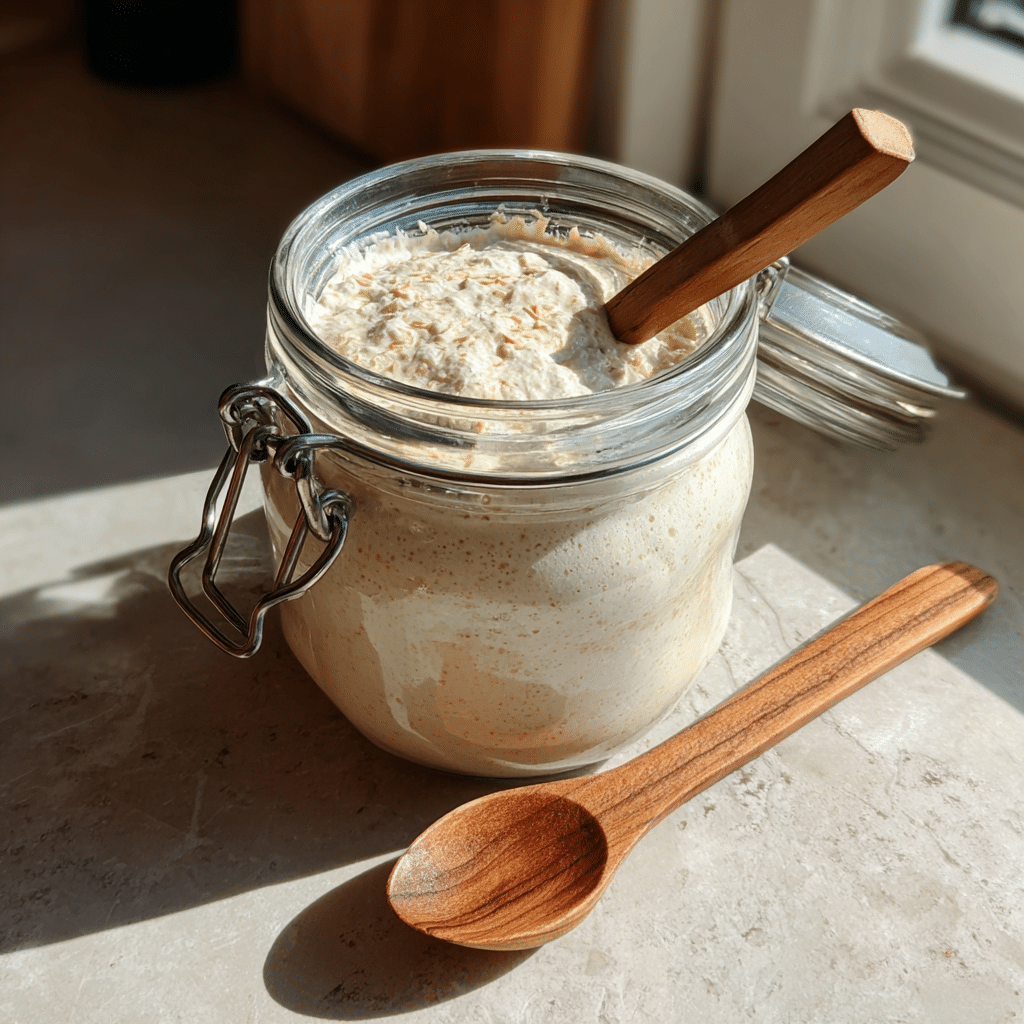
Adjusting Hydration for Bolted Flour
Since bolted flour tends to hold more water than standard white flour yet less than whole wheat, it’s often necessary to slightly adjust your dough’s hydration. Begin by adding a small amount of extra water to your recipe and observe the texture. Aim for dough that feels pliable and manageable, without becoming overly wet or hard to handle.
Flavor and Aroma Development
Fermentation draws out the complex flavors in bolted flour in sourdough bread, giving your bread a subtle nutty sweetness and a deeper aroma. This creates a more balanced and aromatic sourdough loaf that stands apart from those made with plain refined flour.
(Want to experiment with flavor? See how different grains influence your baking and try new combinations.)
Choosing the Right Bolted Flour for Sourdough Bread
Stone-Milled vs. Roller-Milled Bolted Flour
When it comes to choosing the best bolted flour in sourdough bread, milling matters. Stone-milled bolted flour retains more of the wheat kernel’s natural oils, resulting in a more flavorful and aromatic loaf. Roller-milled flour, on the other hand, has a lighter texture but can sometimes lack depth of flavor. If you can access freshly milled stone-ground flour, it is worth the investment for artisan-quality bread.
(Looking for ways to improve your baking with premium flour? See our guide on selecting artisan-friendly ingredients.)
Freshness is Key
Flour loses flavor and nutrients over time, especially once it has been milled. If possible, buy your bolted flour from local mills or suppliers who produce it in small batches. Freshly milled flour enhances fermentation and creates a more vibrant, flavorful sourdough.
Understanding Extraction Levels
Many bolted flours list their extraction levels. A higher percentage means more bran and germ are retained, giving your bread a richer taste and darker color. Lower extraction levels create a lighter loaf that’s closer to white bread. Experiment with different extraction levels until you find the balance of flavor and texture that suits your baking style.
How to Use Bolted Flour in Your Sourdough Recipe
Adjusting Hydration Levels
When using bolted flour in sourdough bread, hydration adjustments are essential. Bolted flour absorbs more water than white flour, so start by adding 2–5% more water than your typical sourdough recipe calls for. Watch the dough during mixing. It should feel soft, elastic, and slightly tacky, but not overly sticky.
Blending Bolted Flour with Other Flours
If you are new to working with bolted flour in sourdough bread, try blending it with white bread flour. A 50:50 mix is a good starting point, giving you the flavor and nutritional benefits of bolted flour without changing the dough’s handling drastically. As you gain confidence, you can increase the percentage of bolted flour in your recipes.
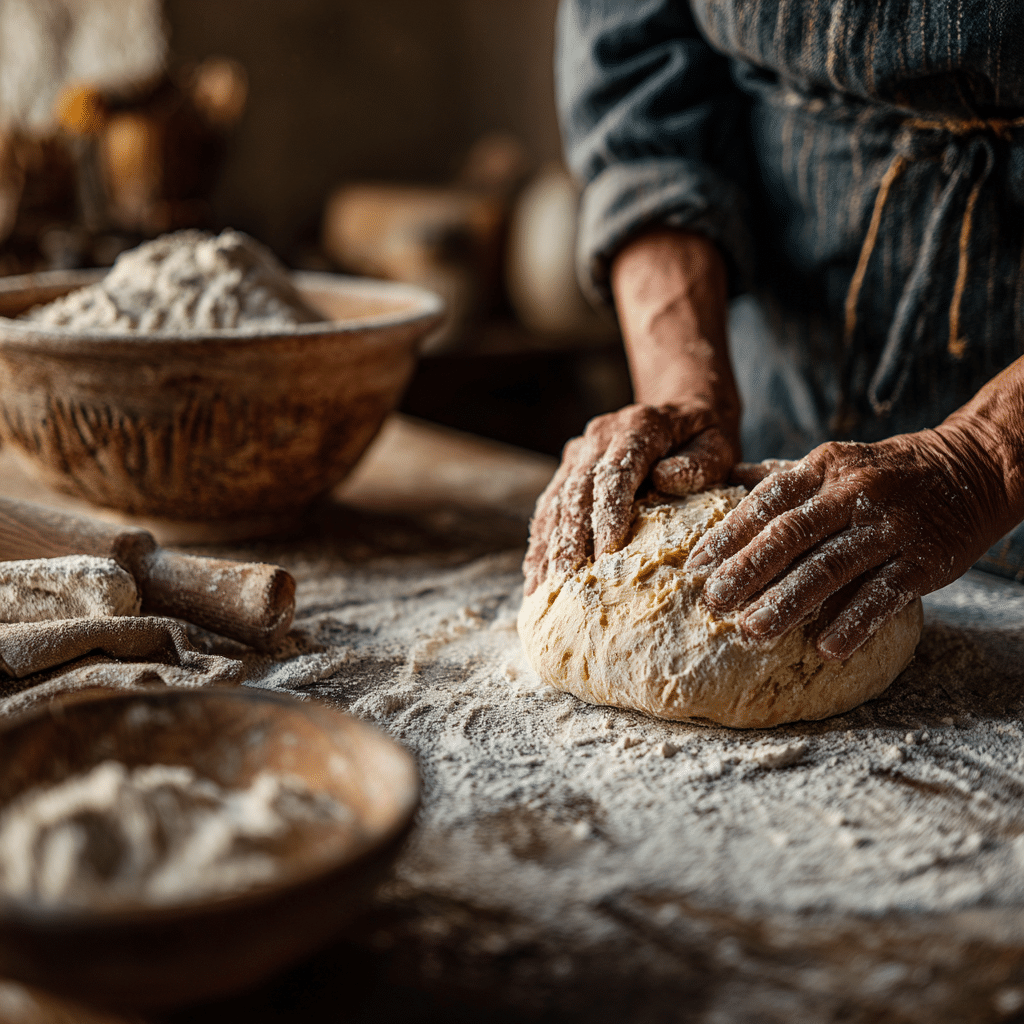
(Curious about experimenting with flour blends? Explore our tips on combining flours for unique breads.)
Troubleshooting Common Issues
If your dough turns out too sticky, reduce hydration slightly or extend the autolyse phase, allowing the flour to absorb water more fully. If the dough feels too stiff, increase hydration or let it rest longer between folds. Keep in mind that sourdough with bolted flour can behave differently than all-white flour dough, so small adjustments are part of the learning process.
Step-by-Step Guide to Baking Sourdough with Bolted Flour
Baking sourdough with bolted flour requires a few adjustments, but the payoff is worth it — a loaf that is flavorful, nutritious, and artisan-quality. Follow this recipe for a tried-and-true approach.
Tasty Card: Bolted Flour Sourdough Bread
Ingredients:
- 300g bolted flour
- 200g bread flour
- 375g water (adjust as needed)
- 100g active sourdough starter
- 9g sea salt
Instructions:
- Mix and Autolyse: Combine the flours and water. Let it rest for 1 hour to hydrate the flour.
- Add Starter and Salt: Mix in the sourdough starter and salt until fully incorporated.
- Bulk Fermentation: Let the dough rest for 3–4 hours, folding every 30 minutes.
- Shape and Proof: Shape the dough and place it in a floured banneton. Refrigerate overnight for a slow, cold proof.
- Bake: Preheat your oven to 475°F with a Dutch oven inside. Bake for 20 minutes covered, then another 20–25 minutes uncovered until golden brown.
Serving Tip: This bolted flour in sourdough bread pairs beautifully with soups, cheeses, or simply butter and honey.
(Want more creative recipes? Try these artisan baking ideas.)
Advanced Tips for Baking with Bolted Flour
Once you are comfortable with the basics of baking sourdough with bolted flour, these tips will help you refine your loaves.
Use Long Fermentation for Deeper Flavor
A longer cold fermentation can enhance the complex flavors of bolted flour in sourdough bread, giving you a more aromatic and layered profile.
Boosting Crust and Color
Bolted flour naturally produces a golden crust. For deeper color and flavor, bake in a Dutch oven with steam or brush the loaf lightly with water before baking.
Experimenting with Blends
Blend bolted flour with rye, spelt, or whole wheat for even more depth. This experimentation allows you to customize the flavor and texture to your liking.
(Need more advanced techniques? Explore our guide to professional bread baking.)
Pairing Bolted Flour Sourdough with Meals
One of the best things about bolted flour in sourdough bread is its versatility at the table. The nutty, slightly sweet flavor profile pairs perfectly with a wide range of dishes, making it more than just a side — it becomes part of the meal.
Best Foods to Pair With Bolted Sourdough
- Hearty soups and stews: The depth of sourdough with bolted flour makes it perfect for dipping into thick soups or slow-cooked stews.
- Cheese and charcuterie: Its balanced tang enhances sharp cheeses, cured meats, and spreads.
- Simple accompaniments: Sometimes the best pairing is simple butter, honey, or olive oil with a pinch of salt.
(Looking for more bread-based meal ideas? Check out our creative recipes for inspiration.)
Creative Ways to Use Bolted Sourdough
Beyond slices, use bolted flour sourdough bread as a base for bruschetta, savory bread puddings, or breakfast toasts topped with cottage cheese or eggs.
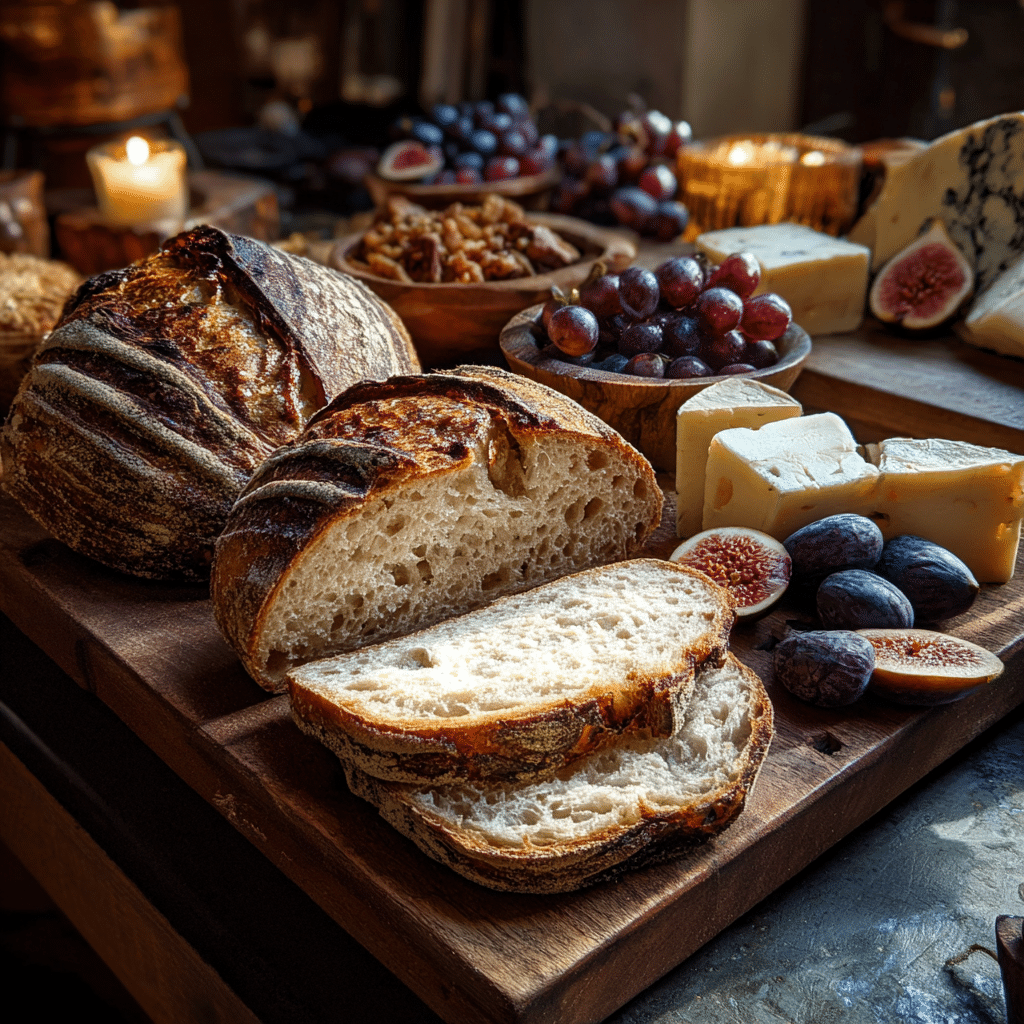
(Want more healthy meal pairings? Explore our baked breakfast recipes.)
Conclusion
Bolted flour in sourdough bread offers bakers a way to create loaves that are flavorful, nutritious, and satisfying without the heaviness of whole wheat. Whether you blend it with other flours or make it the star of your bake, bolted flour can elevate your bread from good to unforgettable.
(Ready to level up your baking? Discover more creative bread recipes here.)
This is where taste begins. For what comes next, follow my kitchen chronicles on Pinterest and Medium.
PART 9: FAQs about Bolted Flour in Sourdough Bread
Can I use almond flour to make sourdough bread?
Almond flour doesn’t contain gluten, so it cannot replace wheat flour entirely. However, you can mix small amounts of almond flour with bolted flour in sourdough bread recipes for added flavor and texture.
What is bolted bread flour?
Bolted bread flour is partially sifted wheat flour that retains some of the bran and germ. It delivers more flavor and nutrients than white flour but is lighter and easier to work with than whole wheat.
Can you replace regular flour with almond flour in banana bread?
You can replace part of the wheat flour with almond flour in banana bread, but using it alone will produce a much denser texture. Combining it with bolted or bread flour will yield a better balance.
What happens if you put too much flour in your sourdough?
Adding too much flour can make your dough stiff and hard to knead, resulting in a dense loaf with poor fermentation. Stick to your recipe ratios, especially when working with bolted flour in sourdough bread.

